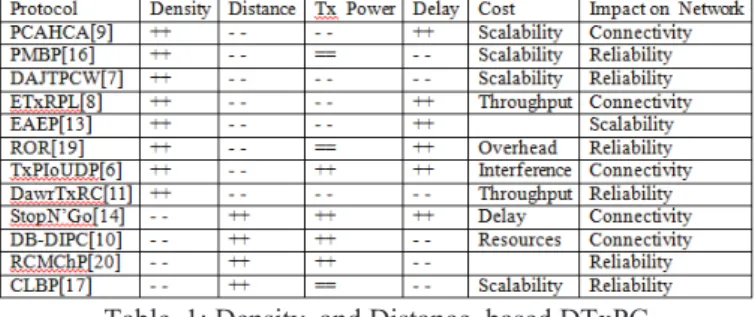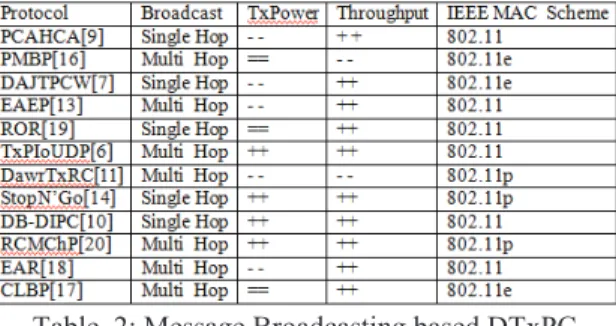Network parameters impact on dynamic transmission power control in vehicular ad hoc networks
Texte intégral
Figure




Documents relatifs
persion and E R were obtained for PP-based CPNC, while these for PA 6 type CPNC form two distinct groups – all samples prepared in TSE compounding line show low relative modulus, E
However, despite being a natural way of evaluating interpretability (Doshi-Velez and Kim, 2017), user-based experiments are not widespread in the machine learning literature (Bibal
A node whih joins the network will reeive the periodi IGROUP message of the
Unit´e de recherche INRIA Rennes, Irisa, Campus universitaire de Beaulieu, 35042 RENNES Cedex Unit´e de recherche INRIA Rh ˆone-Alpes, 655, avenue de l’Europe, 38330 MONTBONNOT
• The basic expression for the probability of packet capture at the distance R from the receiver, valid for both slotted and non-slotted systems given Rayleigh fading and no
It works as intended, since we are easily able to control these radii, except for too low values, where nodes must use a longer one to keep the connectivity: T is too low to keep
While in the protocol DSR with PAA, the mobility of mobile host was under the control of PAA, and further more with the appropriate setting of the length of restarted period, the
Expected sum-utility against the proportion of ad- vanced nodes for an ad hoc network of 50 nodes with 4 − node interactions; by ”advanced” it is meant that the nodes imple- ment
